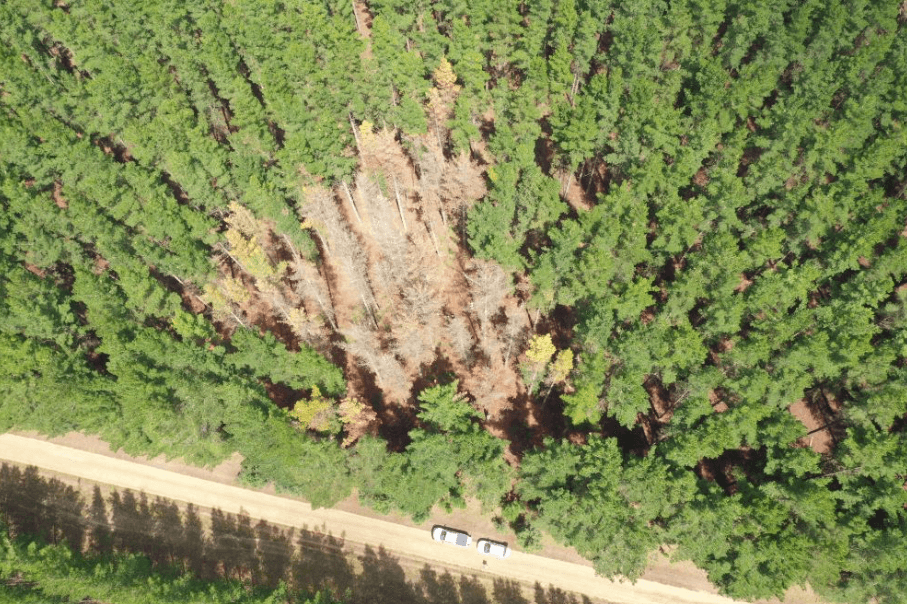Flinders University has secured $1.4 million in funding to refine advanced satellite surveillance software and drone applications.
In a media release published by the university, the two-year research project, titled ‘Evaluation of remote sensing approaches for plantation health surveillance’ will be funded by both federal and state governments via the Mount Gambier Centre of the National Institute for Forest Products Innovation (NIFPI).
The project leverages the capabilities of the European Space Agency’s Sentinel-2 satellite, equipped with a high-resolution multispectral imager with 13 spectral bands. The satellite provides insights into global land and vegetation patterns.

According to David Bruce, an Associate Professor in Geospatial Information Systems (GIS) at Flinders University, the project will use advanced ‘super computers’ to process satellite imagery and detect underperforming trees in plantations across Australia, providing early warnings to foresters.
“By analysing satellite imagery, we can find a range of problems caused by disturbances ranging from disease, water logging, poor management, drought or storms by statistically comparing patches of trees against all other trees in the same species age-class, and by looking at the temporal satellite record.”
Bruce added, “We will also use high-resolution satellite data collection over patches of poorly performing trees and validate our analysis with some low-level airborne observations by aircraft and drones at specific locations.”
The Flinders team includes remote sensing specialist Associate Professor Bruce, PhD Marcio DaSilva, who gained experience with satellite data collection during the Kangaroo Island bushfire damage assessment, and computer programmer Michael Hillman.
Working alongside experts from CSIRO, they’ve spent more than a year and a half testing algorithms, first on desktop computers and then transitioning to cloud computing environments.
The $1.38 million research project brings together the Green Triangle Forest Health Group, NIFPI and Growers Research Advisory Committee, Forest Corporation NSW, the NSW Department of Primary Industries, UniSA and several forest companies in partnership
Eight research projects worth $6 million will receive funding in the latest round of grants.
Murray Watt, Federal Minister for Agriculture, Fisheries, and Forestry, commented:
“This will support ongoing research careers in the forest and wood products sectors while more broadly supporting forestry jobs of the future.”
“The third round of projects will play an important role in exploring and facilitating innovation in areas such as forest management, worker safety, advanced remote sensing, forest water use, tree breeding genetics and optimising resource utilisation.”
The 2022/23 October Federal Budget committed $100 million over five years to expand Australia-wide NIFPI to support research and development to address national challenges in the forest and wood products industries.
$108M Grants Drive Innovation in Australian Forest Products
Last month, the Australian Government awarded over $108 million across 34 separate grants to timber and wood processors.
The funding encourages more value-adding and innovation in the industry.
The Accelerate Adoption of Wood Processing Innovation Program (AAWPIP) supports wood processing facilities in implementing projects that maximize timber utilisation, improve product value, develop new products, and/or reduce the sector’s carbon footprint.
Grant recipients will undertake various innovative projects using the funds, including creating products for the housing and construction industries, packaging materials, high-quality timber, and activated carbon production.






